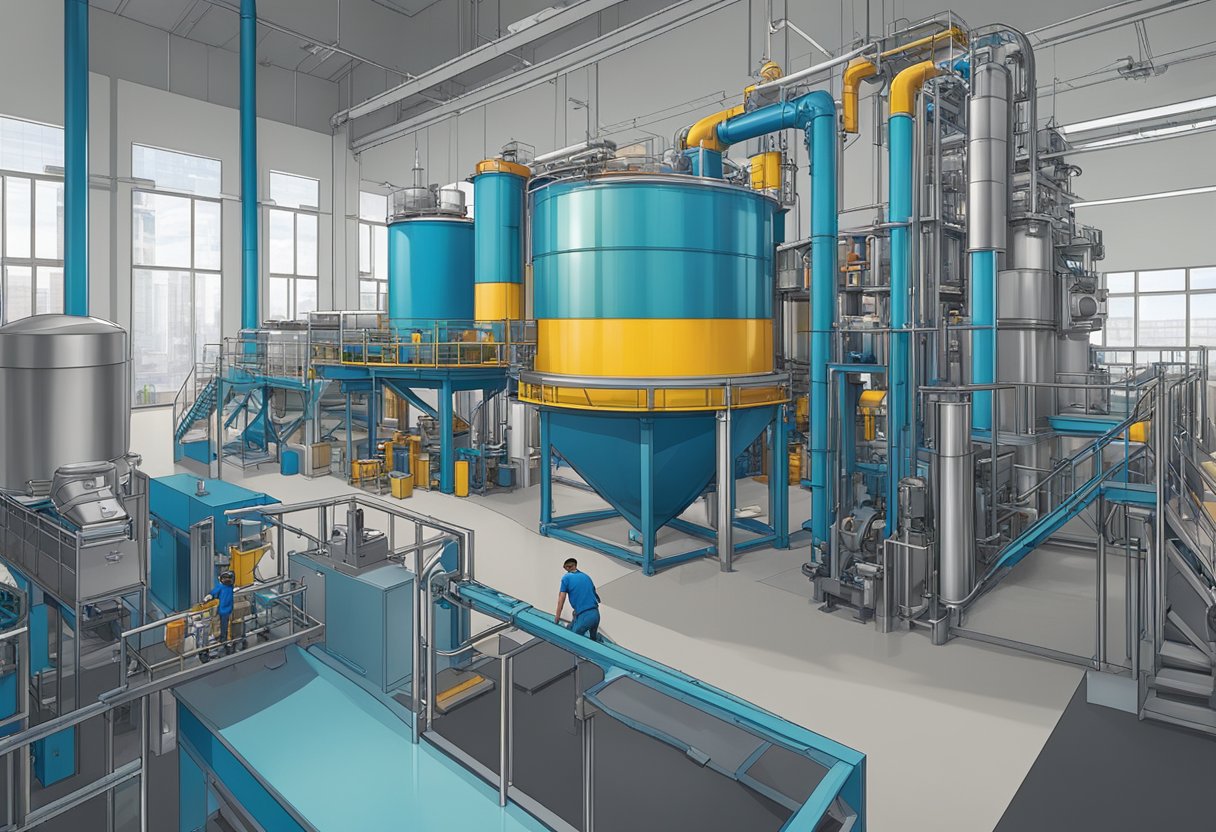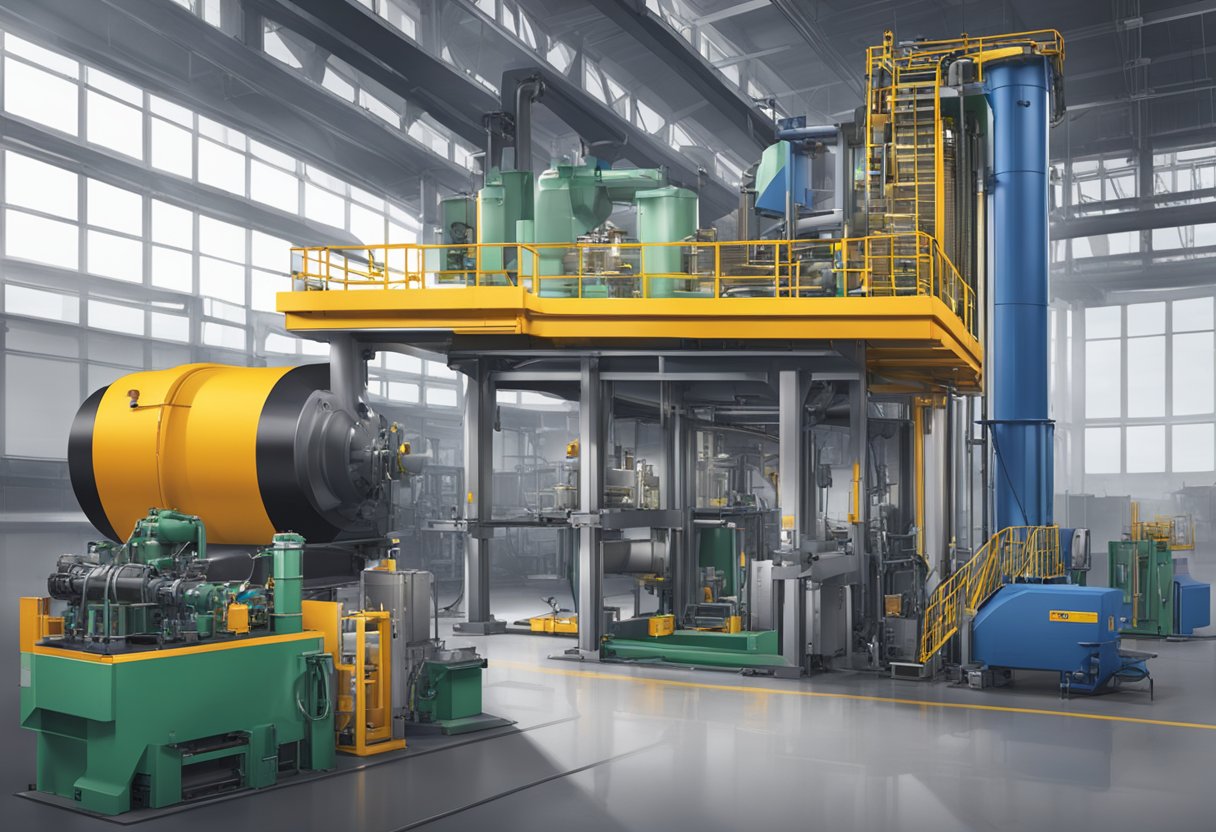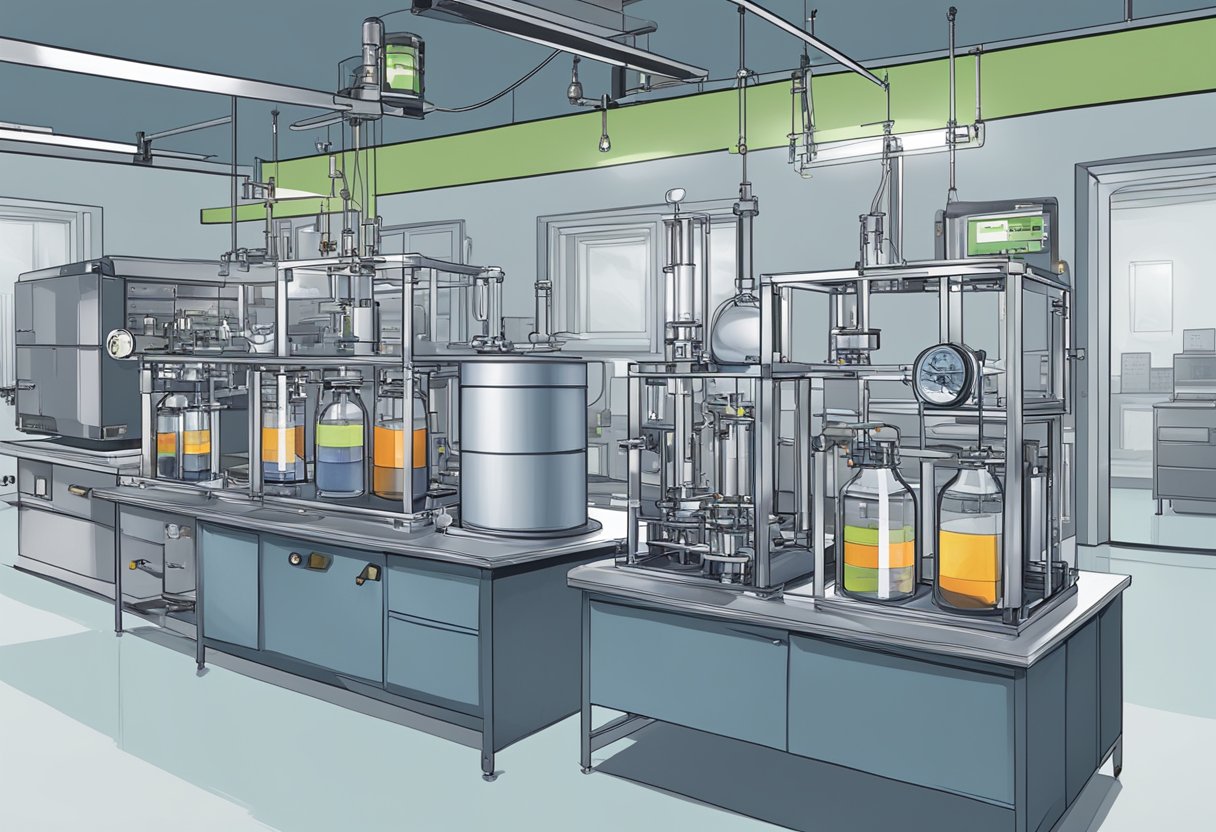TMTM Rubber Accelerator: Properties and Applications
19/01/2024
TMTM rubber accelerator is a widely used chemical compound in the rubber industry. It is a yellow powder that is soluble in benzene, chloroform, and carbon disulfide. TMTM is a thiuram disulfide compound and is commonly used as an accelerator in the production of rubber products such as tires, hoses, and belts.

The primary function of TMTM rubber accelerator is to increase the rate of vulcanization of the rubber, which improves the physical properties of the finished product. It is particularly effective in accelerating the vulcanization of natural rubber and synthetic rubbers such as Zinc, SBR, NBR, and EPDM. TMTM is also known for its ability to improve the heat resistance, aging resistance, and compression set of rubber products.
The use of TMTM rubber accelerator has become increasingly important in the rubber industry due to its effectiveness and versatility. However, it is important to note that TMTM is classified as a hazardous substance and should be handled with care. In this article, we will delve deeper into the properties and applications of TMTM rubber accelerator, as well as its potential risks and safety precautions.
Chemical Properties of TMTM

TMTM (Tetramethylthiuram Monosulfide) is a sulfur-based rubber accelerator that is widely used in the production of tires, belts, hoses, and other rubber products. TMTM is a white to yellowish powder with a sulfur-like odor and a melting point of 104-107°C.
TMTM is soluble in chloroform, benzene, and acetone, and insoluble in water. It has a molecular weight of 208.4 g/mol and a density of 1.38 g/cm³. TMTM is stable under normal conditions, but it may decompose when exposed to heat, light, or moisture.
TMTM is a fast-curing accelerator that can be used alone or in combination with other accelerators such as thiazoles, thiurams, and dithiocarbamates. It can improve the processing and physical properties of rubber products, such as tensile strength, elongation, and hardness. TMTM is particularly suitable for low sulfur vulcanization systems.
In summary, TMTM is a sulfur-based rubber accelerator with a melting point of 104-107°C and a molecular weight of 208.4 g/mol. It is soluble in chloroform, benzene, and acetone, and insoluble in water. TMTM is stable under normal conditions but may decompose when exposed to heat, light, or moisture. It is a fast-curing accelerator that can improve the processing and physical properties of rubber products.
Production Process of TMTM Accelerator

Raw Material Sourcing
The production process of TMTM accelerator starts with the sourcing of raw materials. The primary raw materials used in the production process include tetramethylthiuram monosulfide (TMTM), sulfur, and carbon disulfide. These materials are typically sourced from reputable suppliers to ensure their quality and consistency.
Synthesis
Once the raw materials are sourced, the synthesis process can begin. The first step in the synthesis process is the reaction between TMTM and carbon disulfide to form tetramethylthiuram disulfide (TMTD). This reaction is typically carried out in the presence of a catalyst and under controlled conditions of temperature and pressure.
The TMTD is then reacted with sulfur to form TMTM accelerator. This reaction is also carried out under controlled conditions to ensure the desired product is obtained. The resulting product is then subjected to various tests to ensure its purity and quality.
Purification
The final step in the production process is the purification of the TMTM accelerator. This is typically done using a combination of techniques such as filtration, distillation, and crystallization. The purified product is then packaged and shipped to customers.
Overall, the production process of TMTM accelerator is a complex process that requires careful attention to detail to ensure the desired quality and purity of the final product. Through the use of high-quality raw materials and rigorous testing and purification processes, manufacturers are able to produce TMTM accelerator that meets the needs of a wide range of industries.
Applications in Rubber Manufacturing

TMTM rubber accelerator finds extensive use in the rubber industry for its ability to improve the processing and physical properties of rubber. The following subsections describe the specific applications of TMTM in rubber manufacturing.
Rubber Vulcanization
TMTM is an essential component in the vulcanization process of rubber. It acts as a secondary accelerator, enhancing the crosslinking reaction between sulfur and rubber molecules. This results in improved mechanical properties such as tensile strength, elongation at break, and tear resistance. TMTM also reduces the curing time and increases the rate of vulcanization, leading to higher productivity and cost savings.
Rubber Aging Resistance
TMTM is known for its ability to improve the aging resistance of rubber products. It protects rubber from oxidative degradation caused by heat, light, and oxygen exposure. This leads to increased durability and longevity of rubber products. TMTM also enhances the weathering resistance of rubber, making it suitable for outdoor applications.
In summary, TMTM rubber accelerator is a versatile chemical that finds use in various applications in the rubber industry. Its ability to improve the vulcanization process and aging resistance of rubber makes it an essential component in rubber manufacturing.
Health and Safety Considerations

Handling Procedures
When handling TMTM rubber accelerator, it is important to follow proper handling procedures to ensure safety. This includes wearing appropriate personal protective equipment (PPE), such as gloves and goggles, to prevent skin and eye contact with the substance. In addition, it is important to avoid inhaling the dust or mist created during handling, as it can cause respiratory irritation.
It is also important to handle TMTM rubber accelerator in a well-ventilated area to prevent the buildup of potentially harmful vapors. Proper storage and handling procedures should be followed to prevent spills and leaks, as well as to prevent the substance from coming into contact with incompatible materials.
Exposure Risks
Exposure to TMTM rubber accelerator can pose health risks. Prolonged or repeated exposure to the substance can cause skin irritation and sensitization, as well as respiratory irritation. In addition, it may cause eye irritation or damage and can be harmful if ingested.
Exposure to TMTM rubber accelerator may also pose environmental risks. The substance may be harmful to aquatic organisms and may persist in the environment.
Personal Protective Equipment
When handling TMTM rubber accelerator, it is important to wear appropriate personal protective equipment (PPE) to prevent exposure. This includes gloves, goggles, and a respirator if necessary. The PPE should be selected based on the specific hazards associated with the substance and should be worn in accordance with manufacturer instructions.
It is important to properly maintain and replace PPE as necessary to ensure its effectiveness. In addition, PPE should be properly stored and disposed of to prevent contamination or exposure to others.
Overall, proper handling procedures, awareness of exposure risks, and appropriate use of personal protective equipment are essential for ensuring the safe handling of TMTM rubber accelerator.
Environmental Impact

Waste Management
TMTM rubber accelerator is a chemical compound that is used in the production of rubber products. Like many other chemicals, it can produce waste during the manufacturing process. The waste generated can be in the form of solid or liquid waste, and it may contain harmful chemicals that can cause environmental damage if not properly managed.
To minimize the environmental impact of TMTM rubber accelerator, manufacturers should adopt proper waste management practices. This can include recycling or reusing waste materials, treating and disposing of hazardous waste in accordance with local regulations, and implementing waste reduction strategies.
Emission Controls
During the manufacturing process of TMTM rubber accelerator, emissions can be released into the atmosphere. These emissions can include volatile organic compounds (VOCs), nitrogen oxides (NOx), and other pollutants. These emissions can contribute to air pollution and have negative impacts on human health and the environment.
To minimize the environmental impact of TMTM rubber accelerator, manufacturers should implement emission control measures. This can include using scrubbers or filters to remove pollutants from emissions, implementing energy-efficient practices to reduce emissions, and complying with local regulations on emissions.
In conclusion, TMTM rubber accelerator can have environmental impacts if not properly managed during the manufacturing process. By adopting proper waste management practices and implementing emission control measures, manufacturers can minimize the environmental impact of TMTM rubber accelerator and contribute to a more sustainable future.
Quality Control Measures

TMTM rubber accelerator is an important chemical used in the production of rubber products. Quality control measures are necessary to ensure that the product meets the required standards and specifications.
One of the primary quality control measures for TMTM rubber accelerator is testing for purity. The purity of the product is critical to its effectiveness in the rubber manufacturing process. Impurities can affect the performance of the rubber and lead to defects in the final product. Therefore, the manufacturer must ensure that the TMTM rubber accelerator has a high level of purity.
Another quality control measure is testing for consistency. The TMTM rubber accelerator must have consistent properties and characteristics from batch to batch. This ensures that the product performs consistently and meets the required standards. The manufacturer must conduct regular tests to ensure that the product meets the required specifications.
The manufacturer must also ensure that the TMTM rubber accelerator is stored and transported correctly. The product must be stored in a dry, cool place away from direct sunlight. It must also be transported in a manner that prevents contamination or damage to the product. The manufacturer must have a system in place to monitor the storage and transportation of the product.
In summary, quality control measures are critical to ensuring the effectiveness and consistency of TMTM rubber accelerator. The manufacturer must conduct regular tests for purity and consistency, and ensure that the product is stored and transported correctly. By implementing these measures, the manufacturer can produce a high-quality product that meets the requirements of the rubber manufacturing industry.
Global Market Trends
Demand Analysis
The global demand for TMTM rubber accelerator is expected to witness significant growth in the coming years. The growth in demand can be attributed to the increasing demand for rubber in various end-use industries, such as automotive, construction, and footwear. The demand for TMTM rubber accelerator is also driven by its superior properties, such as high curing speed, excellent scorch safety, and good processing safety.
The Asia-Pacific region is expected to dominate the demand for TMTM rubber accelerator, owing to the presence of large rubber-producing countries, such as China, India, and Thailand. The region is also witnessing significant growth in the automotive and construction industries, which is further driving the demand for TMTM rubber accelerator.
Supply Chain Dynamics
The TMTM rubber accelerator market is highly fragmented, with the presence of both global and regional players. The major players in the market are investing in research and development activities to develop new and advanced products to meet the increasing demand from various end-use industries.
The raw materials required for the production of TMTM rubber accelerator include sulfur, accelerators, and activators. The supply of sulfur is expected to be stable in the coming years, owing to the increasing production of crude oil and natural gas. However, the supply of accelerators and activators may be affected by the fluctuations in the prices of raw materials.
The production of TMTM rubber accelerator is concentrated in the Asia-Pacific region, with China being the largest producer and exporter of the product. The region is witnessing significant growth in the production of TMTM rubber accelerator, owing to the availability of low-cost labor and raw materials.
In conclusion, the global demand for TMTM rubber accelerator is expected to witness significant growth in the coming years, driven by the increasing demand from various end-use industries. The market is highly fragmented, with the presence of both global and regional players. The supply chain dynamics of the market are influenced by the availability and prices of raw materials.
Regulatory Framework
International Standards
TMTM rubber accelerator is subject to various international regulations. The International Agency for Research on Cancer (IARC) has classified TMTM as a Group 3 carcinogen, which means that it is not classifiable as to its carcinogenicity to humans. The European Chemicals Agency (ECHA) has classified TMTM as a Substance of Very High Concern (SVHC) due to its potential effects on human health and the environment.
TMTM is also subject to the United Nations Globally Harmonized System of Classification and Labelling of Chemicals (GHS), which provides a standardized approach to classifying and labelling chemicals. Under GHS, TMTM is classified as a skin sensitiser and toxic to aquatic life.
Regional Regulations
In addition to international regulations, TMTM is subject to various regional regulations. In the United States, TMTM is regulated by the Environmental Protection Agency (EPA) under the Toxic Substances Control Act (TSCA). TMTM is also subject to state-level regulations, such as California’s Proposition 65, which requires businesses to provide warnings to Californians about significant exposures to chemicals that can cause cancer, birth defects, or other reproductive harm.
In the European Union, TMTM is regulated by the Registration, Evaluation, Authorization and Restriction of Chemicals (REACH) regulation. REACH requires companies to register substances manufactured or imported into the EU in quantities of one tonne or more per year. TMTM is also subject to the Classification, Labelling and Packaging (CLP) regulation, which implements the GHS in the EU.
Overall, the regulatory framework for TMTM rubber accelerator is complex and subject to change. Companies that manufacture or use TMTM should stay up-to-date with the latest regulations and ensure that they are in compliance with all applicable laws and regulations.
Innovations in TMTM Formulations
TMTM rubber accelerator has been widely used in the rubber industry for its excellent performance in improving the vulcanization rate and enhancing the mechanical properties of rubber products. In recent years, there have been several innovations in TMTM formulations that have further improved its performance and expanded its applications.
One of the innovations in TMTM formulations is the use of a new type of co-accelerator. This co-accelerator is composed of a blend of thiazole and sulfenamide accelerators, which can significantly improve the vulcanization rate and reduce the curing time of rubber products. The addition of this co-accelerator can also enhance the crosslinking density and mechanical properties of rubber products.
Another innovation in TMTM formulations is the use of a new type of activator. This activator is based on a combination of metal oxides and organic acids, which can improve the efficiency of TMTM and reduce the amount of accelerator needed. This activator can also improve the aging resistance and heat resistance of rubber products.
Furthermore, the use of a new type of dispersing agent has also been introduced in TMTM formulations. This dispersing agent is based on a blend of surfactants and polymers, which can improve the dispersion of TMTM in rubber compounds and reduce the viscosity of the compound. This can lead to better processing properties and improved product quality.
Overall, these innovations in TMTM formulations have expanded its applications and improved its performance in the rubber industry. With continued research and development, it is expected that further innovations will be made in TMTM formulations, leading to even better performance and wider applications.
Storage and Stability
TMTM rubber accelerator is a highly reactive chemical compound that must be stored in a cool, dry, and well-ventilated area. Exposure to heat, moisture, and direct sunlight can cause the product to degrade and lose its effectiveness. Therefore, it is recommended to store TMTM in a tightly sealed container away from any sources of ignition or combustible materials.
The shelf life of TMTM rubber accelerator is typically around one year when stored under optimal conditions. However, the actual shelf life may vary depending on the quality of the product and the storage conditions. To ensure maximum stability and longevity, it is advisable to test the product periodically for its effectiveness.
It is important to note that TMTM rubber accelerator may react with other chemicals, such as acids, alkalis, and oxidizing agents. Therefore, it is essential to keep the product away from these substances to prevent any unwanted reactions.
In summary, proper storage and handling of TMTM rubber accelerator are crucial for maintaining its stability and effectiveness. By following the recommended storage guidelines, users can ensure that the product remains potent and reliable for their rubber compounding needs.




